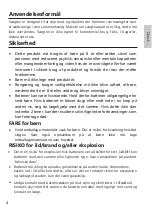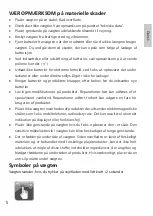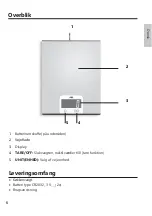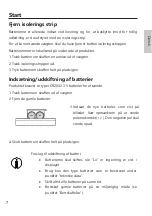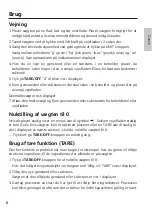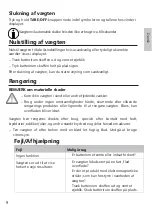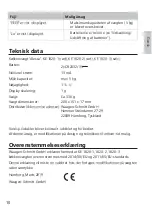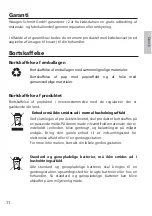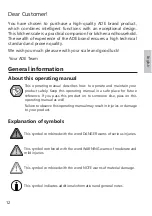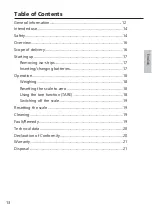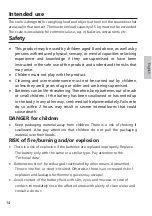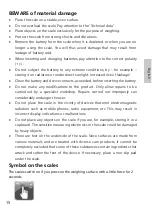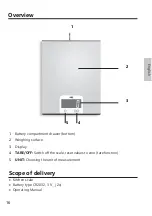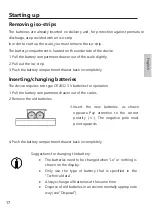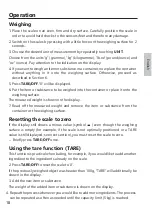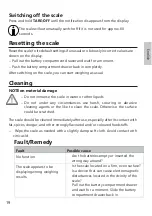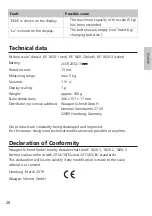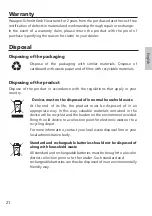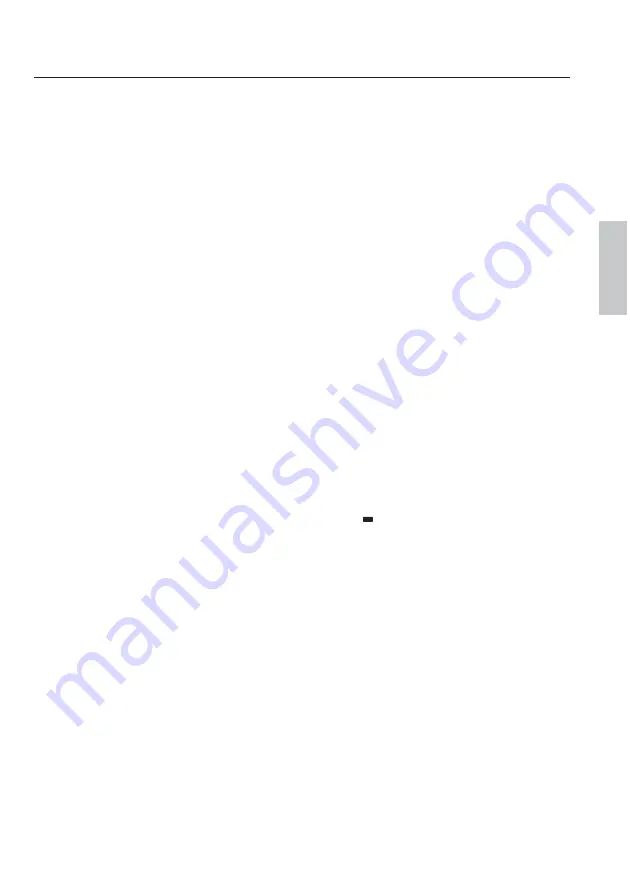
18
Operation
Weighing
1.
Place the scale on an even, firm and dry surface. Carefully position the scale in
order to avoid hard shocks to the sensors/feet and therefore any damage.
2.
Switch on the scales by pressing with a little force on the weighing surface for 2
seconds.
3.
Choose the desired unit of measurement by repeatedly touching
UNIT
.
Choose from the units
“g”
(gramme),
“kg”
(kilogramme),
“lb.oz”
(pound/ounce) and
“oz”
(ounce). Pay attention to the indication on the display.
4.
If you want to weigh an item or substance in a container, now place the container
without anything in it onto the weighing surface. Otherwise, proceed as
described in Section 6.
5.
Press
TARE/OFF
.
“0”
will be displayed.
6.
Put the item or substance to be weighed into the container or place it onto the
weighing surface.
The measured weight is shown on the display.
7.
Read off the measured weight and remove the item or substance from the
container or the weighing surface.
Resetting the scale to zero
If the display still shows a minus value (symbol ) even though the weighing
surface is empty (for example, if the scale is not optimally positioned or a TARE
value is still displayed; see next section), you must reset the scale to zero.
-
Briefly press
TARE
/
OFF
once.
Using the tare function (TARE)
This function is practical when baking, for example, if you would like to add another
ingredient to the ingredients already on the scale.
2.
Press
TARE
/
OFF
to reset the scale to
‘0’.
If the previously weighed object was heavier than 100g, “TARE” will additionally
be
shown in the display.
3.
Add the new item or substance.
The weight of the added item or substance is shown on the display.
4.
Repeat the process whenever you would like to add more ingredients. The process
can be repeated as often as needed until the capacity limit (5 kg) is reached.
English

